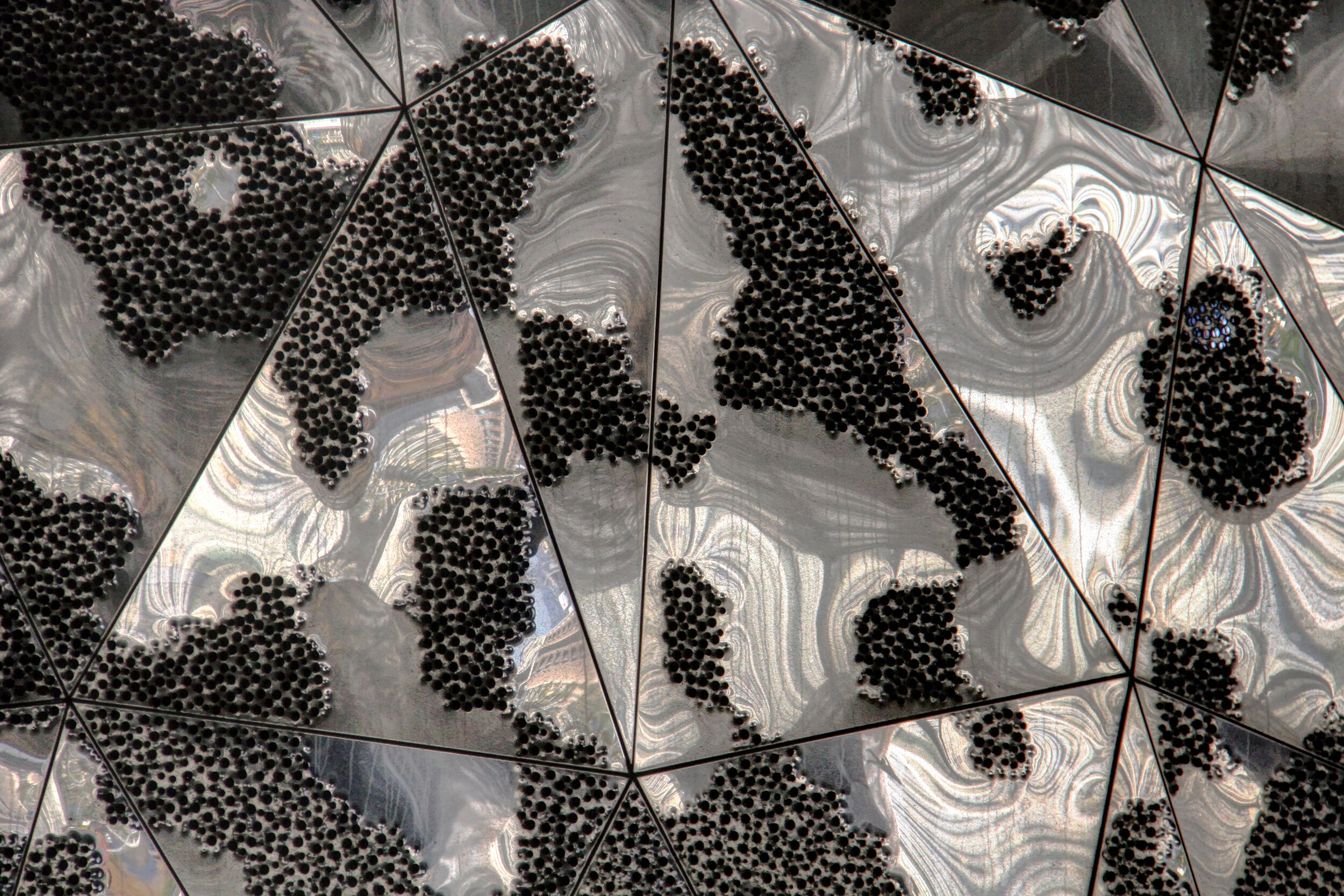
Page 6 of 9
Barcelona, Spain
Which we squirreled away in our rat trap hotel by the freeway
I may have arrived in Madrid three or four times but I spent the most nights (and the slideshow will spend the most time) in Barcelona, easily one of the world's great cities.
One of the greatest and most important pieces of Modern Architecture was Mies van der Rohe's Barcelona Pavilion which stood in Barcelona for less than a year in 1929 and 1930. The building was the (pre Nazi) German entry in an international exposition, served no real purpose (other than just being architecture) and became highly influential despite the fact that it was quickly demolished and doomed forever to fade into memory.
Demolished? Doomed forever to fade into memory? Not so fast. This totally new and rebuilt Barcelona Pavilion is a supposedly faithful recreation on a different site of what you might have seen in 1929 if you were in Barcelona, although probably a bit less shocking now 82 years later.
I have been to Barcelona four times, but this was my first visit to the Palau de la Música Catalana, the 1905 Modernista masterpiece by Barcelona architect Lluís Domènech i Montaner (shockingly other Modernista architects actually got commissions in Barcelona besides Antoni Gaudí). The building's interior is simply spectacular, so spectacular in fact that at only 106 years old it joins buildings like Cordoba's Mezquita (see Page 2) and Seville's Cathedral (see Page 3) as a UNESCO World Heritage Site. Sadly all interior photography was prohibited, although they couldn't stop me from standing outside and taking pictures of a completely overdesigned ticket window. Take that, Palau de la Música Catalana.
Of those four times I have now been to Barcelona, this is the first time that I did not arrive on an overnight train from Paris Austerlitz and only the second time that I didn't return back to Paris very late that very same night. When it came time to pick where to stay overnight for this trip, I decided to be brave and go through Hotwire, an online booking service that I occasionally use that gets you good deals but will not tell you what hotel you booked until after you've already paid for it. The hotel that I ended up booking through Hotwire was in fact a fantastic deal ($150 a night at a hotel that lists for over $500 a night) but had an unfortunate downside of a terribly inconvenient location.
The W Hotel Barcelona, the Hotel Vela, is a five star hotel in a striking building designed by Ricardo Bofill and located right on the Mediterranean at the very end of a pedestrian esplanade. It's the very end part that's a problem. The hotel was a 20 minute walk from the nearest Metro stop at Barceloneta and close to a 10 minute walk from the nearest anything else (shops, restaurant, buses, etc). Its isolated location allowed for spectacular views but also made the mile walk each day feel far longer than it really was, especially during one of those painfully heavy thunderstorms that I sometimes had to deal with.
One of the great apps to have installed on your phone when traveling is called MiMoa. Especially useful when traveling internationally, it is an on the spot guide that tells you what modern and contemporary architecture is nearby and how to find it. This way you don't go all the way to somewhere like Barcelona only to find that all that time you were just a few blocks from something like this, L'Estel Ferit, the wounded star (or perhaps the injured comet), a sculpture by Rebecca Horn that sits halfway between Ricardo Bofill's beautiful but isolated Hotel Vela and Frank Gehry's famous but overrated CATIA fish at the Olympic Village.
Another pilgrimage (of sorts) took me all the way out to where the Diagonal (finally) meets the sea to see the Barcelona Forum, another building by Swiss architects Herzog and de Meuron, or Hedgehog and the Moron as Will Alsop famously once called them. The Forum is interesting but it's not their best building and it’s not nearly as nice as the Caixa Forum in Madrid (see Page 1). The long flat building feels oddly proportioned and its exterior facade (a strange blue material that kind of looks like fireproofing) is the opposite of their normally polished style. That said, it still has its moments, especially at its hovering underside where unexplained skylit shafts open up to give you great little experiences like this. Fun.
The Barcelona Metro is possibly the best subway I have ever been on, despite the constant fear inducing announcements about how everyone everywhere is a filthy, filthy pickpocket. The stations are everywhere (except near the Hotel Vela) and there are accurate countdown clocks (in minutes and seconds) letting you know when the next train will arrive. Such convenience allows for quick trips to stations like Glories to see things like this, Jean Nouvel's Torre Agbar as seen during the nightly two hour window (9pm to 11pm) when they give in to the will of the people and finally turn all those thousands of LED lights on.

